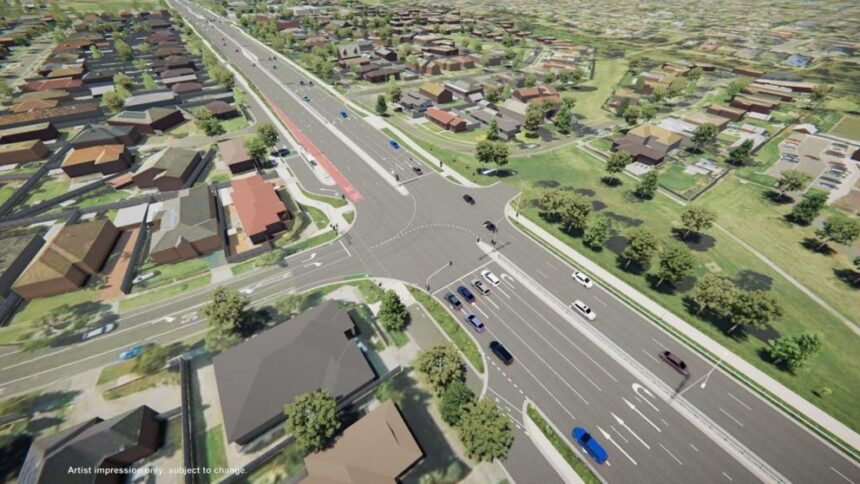Highways are essential for modern transportation, enabling efficient movement of goods and people. However, not all highways are designed or maintained to optimal safety standards. Government road design flaws can pose hidden dangers, leading to accidents and injuries. Understanding these flaws and their impacts is crucial for drivers, policymakers, and road safety advocates.
Injuries resulting from these hidden dangers can be severe, requiring medical attention and potentially leading to significant financial burdens. For those who have suffered injuries from a car accident in Denver, understanding the legal implications and available recourse is essential for securing compensation and justice.
Identifying Common Road Design Issues
Several design issues can compromise highway safety. Here are some common problems and their impacts:
- Sharp Curves without Adequate Warning Signs: Sharp curves can be dangerous if drivers are not adequately warned in advance. Lack of proper signage can lead to sudden braking or loss of control, increasing the risk of accidents.
- Improperly Banked Roads: Roads that are not banked correctly can cause vehicles to slide or tip over, especially at high speeds. Proper banking helps vehicles maintain traction and stability around curves.
- Sudden Lane Merges: Abrupt lane merges without sufficient warning or adequate merging space can create confusion and sudden lane changes, leading to collisions.
- Inadequate Signage: Insufficient or unclear signage can confuse drivers, leading to missed turns, sudden stops, and accidents. Clear, visible signs are essential for guiding drivers safely.
- Poor Lighting: Inadequate lighting, especially at intersections and pedestrian crossings, can make it difficult for drivers to see obstacles, other vehicles, and pedestrians, increasing the risk of nighttime accidents.
The Real-World Impact on Drivers
Road design flaws significantly impact driver safety. Poorly designed intersections can lead to confusion and increase the likelihood of collisions. Inadequate sight distances can prevent drivers from seeing oncoming traffic or obstacles in time to react safely. Sharp curves and improperly banked roads can cause vehicles to lose control, especially at higher speeds.
These design flaws can also exacerbate the severity of accidents. For example, inadequate guardrails or barriers can fail to prevent vehicles from leaving the roadway, leading to more severe crashes and injuries.
Legal Challenges and Accountability
When road design flaws contribute to an accident, determining liability can be complex. Government entities responsible for road design and maintenance may be held accountable if it can be proven that their negligence led to unsafe conditions. However, these cases can be challenging due to governmental immunity and the need to demonstrate clear negligence.
Victims of accidents caused by road design flaws may need to pursue legal action to secure compensation for their injuries. This can include claims for medical expenses, lost wages, pain and suffering, and other related costs. Consulting with a legal professional experienced in handling such cases is essential for navigating the complexities of these claims.
Learning from Case Studies
Examining case studies and examples of accidents caused by road design flaws can provide valuable insights. For instance, accidents at a particular intersection may reveal patterns of collisions that indicate a design issue. Similarly, repeated incidents on a stretch of highway with poor drainage may highlight the need for infrastructure improvements.
These case studies can also illustrate successful legal claims where victims secured compensation. Understanding the factors that contributed to these outcomes can help other victims build strong cases for their claims.
Proactive Measures for Prevention
Preventing accidents caused by road design flaws requires proactive measures and policy changes. Governments and transportation agencies must prioritize regular assessments of road conditions and design standards. Implementing systematic inspections and maintenance programs can identify and address potential hazards before they lead to accidents.
Policy changes should also emphasize the use of modern design standards and technologies. Incorporating features such as better lighting, clearer signage, and advanced warning systems can significantly enhance road safety. Engaging with experts in road design and safety can ensure that new projects meet the highest safety standards.
The Role of Public Advocacy
Advocacy and public awareness play crucial roles in addressing road design flaws. Raising awareness about the dangers posed by poorly designed roads can prompt government action and policy changes. Community engagement and advocacy groups can work together to highlight specific problem areas and push for necessary improvements.
Public awareness campaigns can also educate drivers about potential hazards and encourage safer driving practices. By understanding the risks associated with certain road features, drivers can take extra precautions to avoid accidents.
Leveraging Technological Advancements
Technological advancements offer promising solutions for improving road safety. Intelligent transportation systems (ITS) can provide real-time information about road conditions, traffic, and potential hazards. These systems can help drivers make informed decisions and navigate safely, even in challenging conditions.
Moreover, innovations in road materials and construction techniques can enhance durability and safety. For example, using high-visibility paint for lane markings and incorporating reflective materials in road signs can improve visibility, especially at night or during adverse weather conditions.
Legal Support for Affected Individuals
Victims of accidents caused by road design flaws often face significant challenges in seeking compensation. Legal representation is crucial for navigating these complex cases. Attorneys experienced in handling claims involving road design flaws can provide essential support, from gathering evidence to negotiating with insurance companies and representing clients in court.
Free consultations with a car accident lawyer can help victims understand their rights and the potential outcomes of their cases. Legal professionals can offer guidance on the best course of action and work to secure fair compensation for medical expenses, lost wages, and other damages.
Community Reporting and Involvement
Community involvement is essential for identifying and addressing road design flaws. Residents can report hazardous road conditions to local authorities, helping to prioritize areas that need attention. Community feedback can also provide valuable insights into the real-world impact of road design on safety.
Local governments and transportation agencies should establish clear channels for reporting and addressing road design issues. Responsive and transparent processes can build trust with the community and ensure that safety concerns are promptly addressed.
Moving Towards Safer Highways
Government road design flaws pose hidden dangers on our highways, leading to accidents and injuries. Understanding these flaws and their impacts is crucial for improving road safety and preventing accidents. For those who have suffered injuries from a car accident in Denver, seeking legal assistance is essential for navigating the complexities of compensation claims. By combining proactive measures, policy changes, technological innovations, and community involvement, we can work towards safer highways and reduce the risks associated with poor road design.






